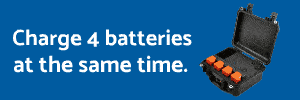I have been a bit hesitant to post this because the image I am posting is NOT directly from a Mavic Enterprise Duo FLIR but from the same sensor and lens as used on the Mavic Enterprise Duo FLIR.
When FLIR announced it's "GoPro FLIR clone" I jumped on it, thinking it would be useful for Search And Rescue and things of that nature and I would be able to rivive my trusty Phantom 2 with Zenmuse gimbal (made for GoPro sized cameras). I was sorely disappointed as in my review HERE. That camera is now discontinued , maybe the 75,000+ views on my basically negative review had something to do with that?
When DJI announced the Enterprise Series with FLIR I was extremely excited... until I spoke with them at the CES trade show and found out they were using the same sensor and lens as in the FLIR Duo R which I had already condemned for (most) uses.
THEN came along the Autel Evo II Duo with a very good sized sensor. I ordered one on the spot... well, pre-ordered through Drone Nerds at the 2020 CES show this year.
I've had it for 10 days now, done several flights out my back yard and I am very satisfied with the FLIR camera capabilities. (More on the Evo II when I do a full unbiased review).
The image posted will give you a general idea the difference between an 160x120 sensor and a 640 x 512 sensor. Quite a difference and the very reason I did not get a Mavic Enterprise.
AGAIN: This is NOT an image off of a Mavic, but from the FLIR Duo R which uses the same sensor and lens as the Mavic. I will say after seeing some footage and comparisons on line of actual Mavic Duo FLIR images, the posted image is more grainy, but not that far off what you would see in a Mavic Duo.
Hope this helps

When FLIR announced it's "GoPro FLIR clone" I jumped on it, thinking it would be useful for Search And Rescue and things of that nature and I would be able to rivive my trusty Phantom 2 with Zenmuse gimbal (made for GoPro sized cameras). I was sorely disappointed as in my review HERE. That camera is now discontinued , maybe the 75,000+ views on my basically negative review had something to do with that?
When DJI announced the Enterprise Series with FLIR I was extremely excited... until I spoke with them at the CES trade show and found out they were using the same sensor and lens as in the FLIR Duo R which I had already condemned for (most) uses.
THEN came along the Autel Evo II Duo with a very good sized sensor. I ordered one on the spot... well, pre-ordered through Drone Nerds at the 2020 CES show this year.
I've had it for 10 days now, done several flights out my back yard and I am very satisfied with the FLIR camera capabilities. (More on the Evo II when I do a full unbiased review).
The image posted will give you a general idea the difference between an 160x120 sensor and a 640 x 512 sensor. Quite a difference and the very reason I did not get a Mavic Enterprise.
AGAIN: This is NOT an image off of a Mavic, but from the FLIR Duo R which uses the same sensor and lens as the Mavic. I will say after seeing some footage and comparisons on line of actual Mavic Duo FLIR images, the posted image is more grainy, but not that far off what you would see in a Mavic Duo.
Hope this helps
Last edited:







